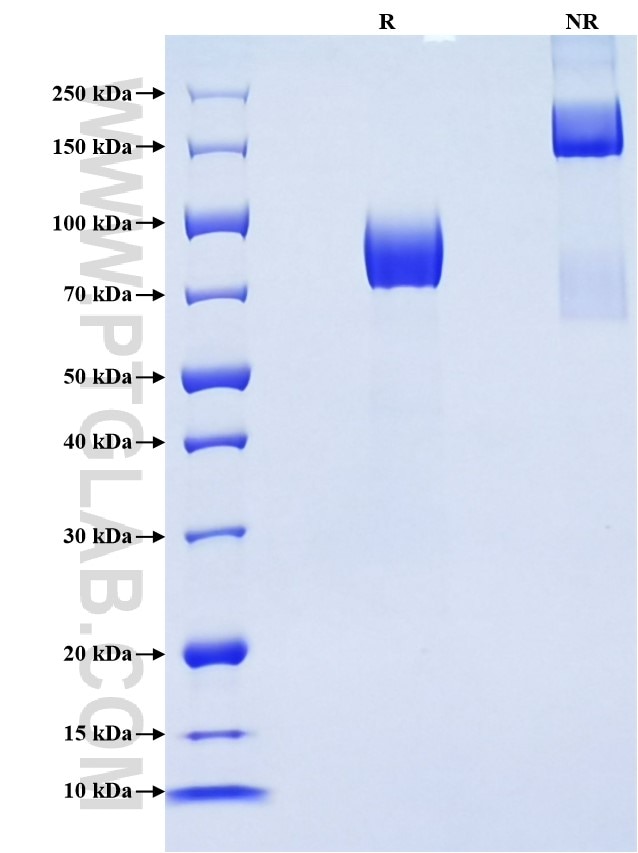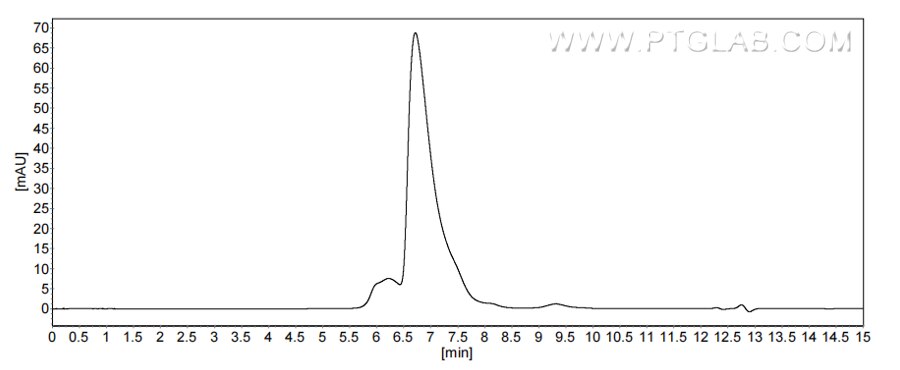Recombinant Human Nectin 3 protein (rFc Tag) (HPLC verified)
Species
Human
Purity
>90 %, SDS-PAGE
>90 %, SEC-HPLC
Tag
rFc Tag
Activity
not tested
Cat no : Eg2657
Validation Data Gallery
Product Information
| Purity | >90 %, SDS-PAGE >90 %, SEC-HPLC |
| Endotoxin | <0.1 EU/μg protein, LAL method |
| Activity |
Not tested |
| Expression | HEK293-derived Human Nectin 3 protein Gly58-Asp400 (Accession# Q9NQS3-1) with a rabbit IgG Fc tag at the C-terminus. |
| GeneID | 25945 |
| Accession | Q9NQS3-1 |
| PredictedSize | 63.7 kDa |
| SDS-PAGE | 70-100 kDa, reducing (R) conditions |
| Formulation | Lyophilized from 0.22 μm filtered solution in PBS, pH 7.4. Normally 5% trehalose and 5% mannitol are added as protectants before lyophilization. |
| Reconstitution | Briefly centrifuge the tube before opening. Reconstitute at 0.1-0.5 mg/mL in sterile water. |
| Storage Conditions |
It is recommended that the protein be aliquoted for optimal storage. Avoid repeated freeze-thaw cycles.
|
| Shipping | The product is shipped at ambient temperature. Upon receipt, store it immediately at the recommended temperature. |
Background
PVRL3, also known as CD113 or Nectin3, belonging to the immunoglobulin-like cellular adhesion molecule family, plays a critical role in Ca2+-independent cellular adhesion and is involved in the regulation of the immune system through its interaction with the TIGIT receptor on T cells and Natural Killer (NK) cells. PVRL3 can influence tumor growth and metastasis by modulation of intercellular connections and cell signaling. In particular, in different cancer types (ovarian carcinoma, nasopharyngeal carcinoma, prostate carcinoma, and lung adenocarcinoma). Additionally, evidence suggests that PVRL3 may play a role in the tumor microenvironment, influencing the local immune response and interaction with stromal cells.
References:
1. Gian Marco Leone. et al. (2024). Cells. 13(15):1299. 2. Yoshimasa Maniwa. et al. (2012). Thorac Cancer. 3(2):175-181. 3. Yin Zhao. et al. (2020). Cancer Commun (Lond). 40(12):721-737. 4. Anastasia V Suhovskih. et al. (2017). Cell Adh Migr. 11(1):39-53. 5. Baokang Wu. et al. (2021). J Exp Clin Cancer Res. 40(1):267.

